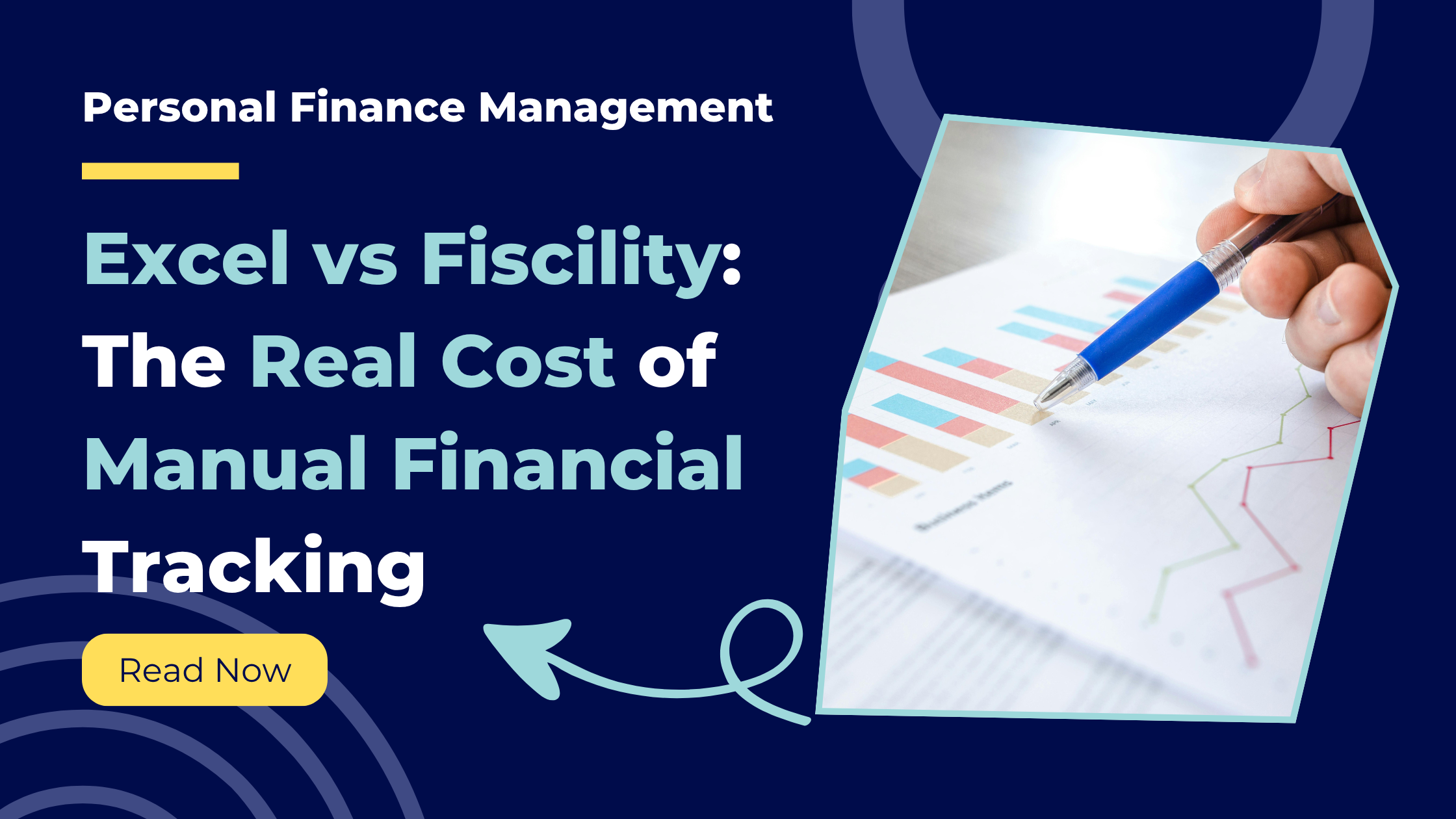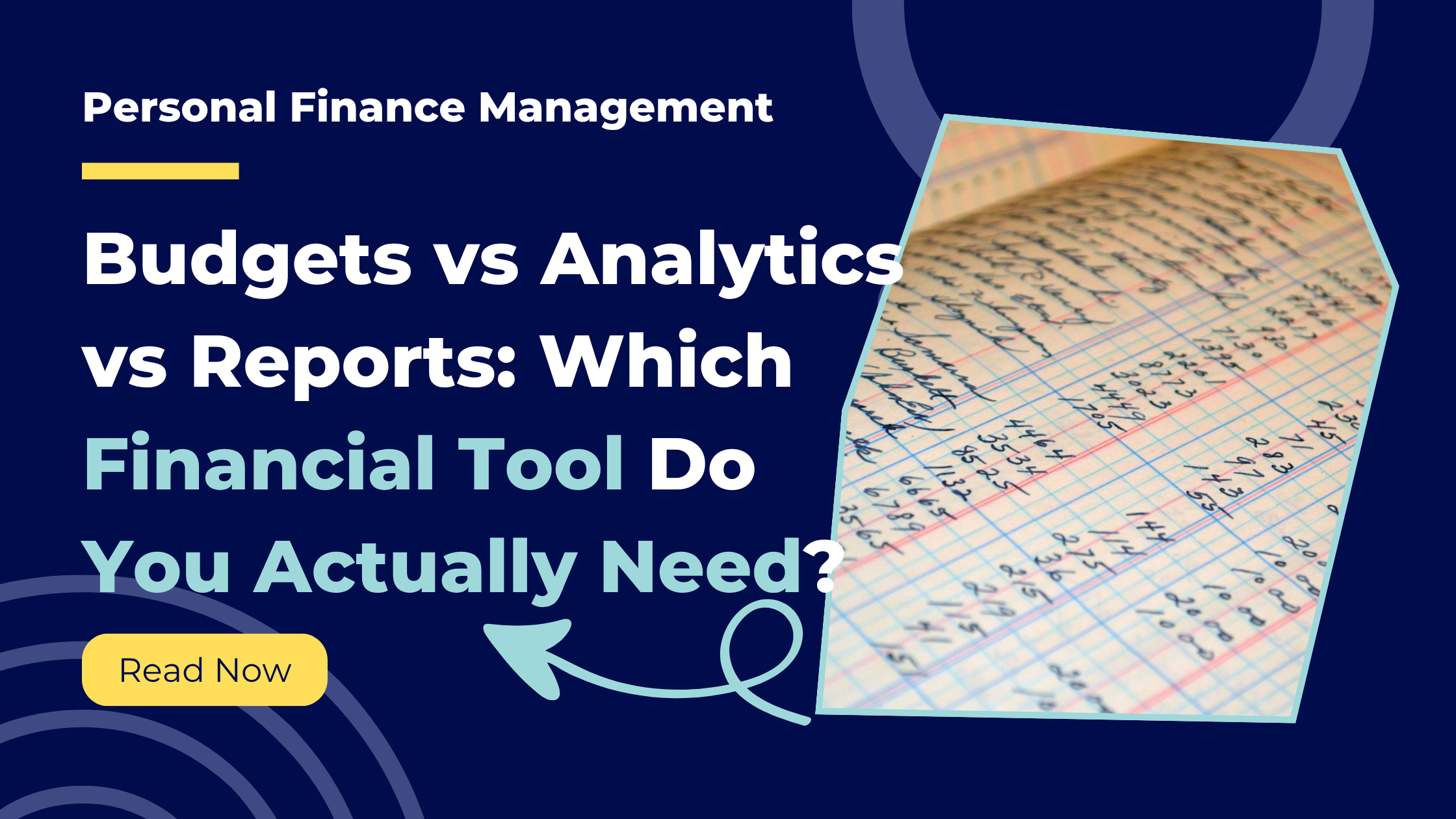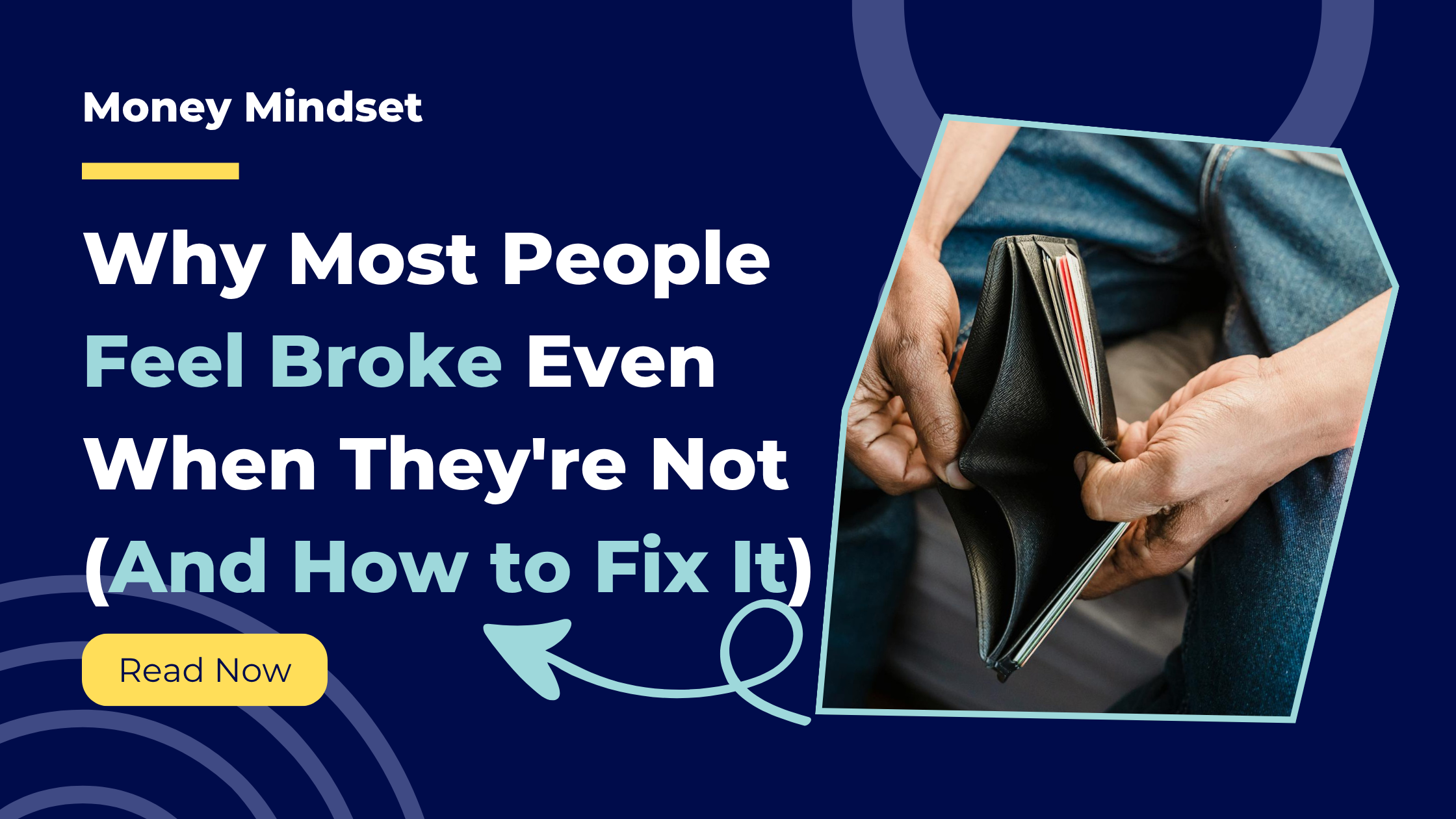
•
1 min read
How to Build a Healthy Relationship with Your Money: A Framework for Financial Peace
Learn how to transform financial anxiety into confidence through routine reporting and emotional awareness. A practical guide to money mindset.
You check your bank balance before buying something. Your stomach tightens. Is there enough? Will this cause problems later? You buy it anyway, but the anxiety lingers. Did you just make a mistake?
This is what an unhealthy relationship with money feels like. Constant low-level stress. Guilt after purchases. Avoidance of looking at statements. Oscillating between feeling flush and feeling broke.
According to the Money and Mental Health Policy Institute, 46% of people with problem debt also have a mental health problem, and the relationship runs both ways. Money stress damages mental health. Mental health struggles make money management harder.
The root cause is rarely the amount you have. It is how you relate to what you have. A healthy relationship with money requires emotional stability, and emotional stability requires one thing above all: consistent visibility.
In this post, you will learn a practical framework for building a healthy relationship with your money. You will discover why routine reporting is the foundation of financial peace, how to recognise unhealthy money patterns, and how to replace anxiety with confidence through simple systems. Fiscility automates the reporting that creates this emotional stability.
What a Healthy Relationship with Money Actually Looks Like
The Characteristics of Financial Peace
A healthy relationship with money has specific markers. You feel calm when checking your balance. You make spending decisions confidently, knowing what you can afford. You plan for the future without panic. You recover from setbacks without shame.
Money becomes a tool, not a source of identity or stress. You do not define yourself by how much you have. You do not avoid financial information. You do not spiral into catastrophic thinking when unexpected expenses appear.
Most importantly, you experience financial clarity. You know where you stand. You know what is coming. You know what your numbers mean.
The Characteristics of Financial Anxiety
An unhealthy relationship with money shows up in predictable patterns. You avoid looking at statements or bank balances. You feel guilt or shame after purchases, even necessary ones. You catastrophise about the future based on limited information.
You oscillate between feast and famine thinking. A good month makes you feel invincible. A bad month makes you feel like a failure. You lack middle ground.
You make decisions reactively. You buy things when you feel stressed. You restrict spending harshly when you feel guilty. Neither approach connects to actual financial reality.
The common thread is disconnection. You are disconnected from your numbers, your patterns, and your actual position.
Why Most Financial Advice Fails to Address the Emotional Side
The Myth of Willpower and Discipline
Traditional financial advice focuses on behaviour change. Spend less. Save more. Budget strictly. Track every penny. Follow these rules and your problems will disappear.
This advice ignores the emotional foundation. You cannot willpower your way out of financial anxiety. You cannot discipline yourself into emotional stability.
If you feel anxious about money, telling yourself to "just check your account more often" does not work. The anxiety prevents you from checking. The less you check, the more anxious you become. The cycle reinforces itself.
The Missing Piece: Emotional Safety
A healthy relationship with money requires emotional safety. You need to feel safe looking at your financial information. You need to trust that knowing the truth, even if uncomfortable, is better than avoiding it.
This safety comes from routine and predictability. When you receive financial information consistently, at expected times, in digestible formats, your nervous system learns that money information is not a threat. It becomes normal.
This is why routine reporting is transformative. It is not about the data. It is about the emotional regulation that comes from consistent, non-threatening exposure to your financial reality.
The Framework: Five Steps to Financial Emotional Stability
Step 1: Establish Routine Visibility
The foundation of a healthy money relationship is seeing your numbers regularly without having to force yourself to look.
Why this matters:
Avoidance is the enemy of emotional stability. When you avoid financial information, your brain fills the gap with anxiety and worst-case scenarios. When you see your numbers regularly, reality replaces imagination.
How to implement:
Set up automated financial reports that arrive at consistent intervals. Daily, weekly, or both. The reports come to you. You do not have to remember to check. You do not have to overcome resistance.
This removes the activation energy. You open an email or notification. You see your position. You close it. Done.
Over time, this routine normalises money information. Your brain learns that checking your finances does not lead to catastrophe. It leads to information. Information you can use.
Fiscility delivers:
Scheduled reports via email or in-app notifications. You choose the frequency. The system handles delivery. Your financial position arrives consistently, building the routine that creates emotional safety.
Step 2: Separate Facts from Stories
The numbers in your account are facts. The meaning you assign to those numbers is a story. Learning to distinguish between the two is critical for emotional stability.
Why this matters:
Your brain interprets financial information through emotional filters. A bank balance of £1,200 is just a number. The story "I am broke" or "I am failing" is your interpretation. The story creates the anxiety, not the number.
How to implement:
Practice observing your financial data neutrally before reacting emotionally. When you see your balance or spending, pause. Ask yourself: "What is the fact here? What is the story I am telling about this fact?"
Example:
Fact: I spent £340 on groceries this month.
Story: I am terrible with money and always overspend.
Fact: My balance is £850.
Story: I am going to run out of money and be in crisis.
Once you separate fact from story, you can question the story. Is it true? Is it helpful? What alternative story fits the facts better?
Alternative story for groceries: I spent £340 on groceries, which is higher than usual. I can look at what drove the increase and adjust if needed.
Alternative story for balance: I have £850 right now. I know my upcoming expenses. I can check whether this is enough and make a plan if it is not.
Neutral observation creates space between information and reaction. In that space, you regain control.
Fiscility delivers:
Reports that present facts clearly without judgement. You see what happened, what is happening, and what is coming. The platform does not label anything as good or bad. It provides context so you can decide what the information means.
Step 3: Build Predictability into Your Financial Life
Emotional stability requires predictability. When you know what to expect, your nervous system relaxes. When everything feels random, anxiety increases.
Why this matters:
Financial unpredictability triggers stress. If you do not know when bills will hit, how much you will spend, or whether you have enough, your brain stays in threat mode. Predictability creates safety.
How to implement:
Identify your recurring expenses. When do they occur? How much are they? Get this information out of your head and into a visible system.
Use scheduled reports to track upcoming obligations. When you see what is coming in the next week or month, you eliminate surprise. Surprise is the enemy of emotional stability.
Create simple rules for yourself based on your numbers. "I can spend £X per week on discretionary items." "I need to keep £Y in my account for bills." These rules reduce decision fatigue.
Example:
You know that every month, £1,200 goes to fixed expenses. Rent, utilities, subscriptions, insurance. When this is visible and predictable, you stop worrying about it. You know it is handled.
You also know that you have £400 per week for variable spending. Groceries, petrol, entertainment. When you have spent £300 by Thursday, you know you have £100 left for the week. No guessing. No anxiety.
Fiscility delivers:
Visibility into upcoming recurring expenses and obligations. Reports show what is coming, not just what happened. This forward visibility creates the predictability that reduces financial stress.
Step 4: Respond to Reality, Not Reaction
A healthy money relationship means making decisions based on actual information, not emotional reactions or assumptions.
Why this matters:
Reactive decisions create chaos. You feel stressed, so you restrict spending harshly. You feel good, so you overspend. Neither response connects to your actual financial position. Over time, reactive decisions compound into real problems.
How to implement:
Before making a financial decision, check your actual position. Not your memory of it. Not your guess. Your actual current numbers.
Ask yourself: "Based on my current balance, upcoming obligations, and recent patterns, can I afford this? Will this create a problem later?"
If the answer is yes, make the purchase without guilt. If the answer is no, decline without shame. You are responding to information, not emotion.
This approach eliminates the guilt-spend cycle. You are not depriving yourself or overindulging. You are making informed choices.
Example:
You want to buy a £150 pair of trainers. Old pattern: check balance, see £800, feel uncertain, buy them anyway, feel guilty later.
New pattern: check scheduled report, see you have £800 now, £220 in bills coming next week, and £400 available for discretionary spending this month. You have already spent £280 on discretionary items. You have £120 left. The trainers cost more than your remaining budget.
Decision: wait until next month, or decide the trainers are worth going over budget this month and adjust spending elsewhere. Either way, you decide with information, not anxiety.
Fiscility delivers:
Real-time visibility into current position and available capacity. Reports show discretionary spending room based on obligations and patterns. You know what you can safely spend without mental maths or guesswork.
Step 5: Celebrate Progress, Not Perfection
Building a healthy relationship with money is a process. You will make mistakes. You will overspend sometimes. You will feel anxious sometimes. This is normal. Progress, not perfection, is the goal.
Why this matters:
Perfectionism kills progress. If you expect yourself to never overspend, never feel anxious, and always make optimal decisions, you will fail. When you fail, you will feel shame. Shame reinforces avoidance. Avoidance increases anxiety. The cycle continues.
How to implement:
Track small wins. Did you check your balance this week without spiraling? Progress. Did you make one decision based on information instead of reaction? Progress. Did you review your weekly report even when you did not want to? Progress.
When you overspend or make a mistake, observe it neutrally. "I spent more than planned this week. What drove that? What can I learn?" This is feedback, not failure.
Over time, small improvements compound. You check your numbers more often. You feel less anxious when you do. You make better decisions more consistently. This is how healthy relationships are built.
Fiscility delivers:
Historical data that shows your progress. You can see how your patterns change over time. Are you checking reports more consistently? Are your cashflow trends improving? Are you recovering from setbacks faster? Visibility into progress reinforces the behaviour.
The Role of Routine Reporting in Emotional Regulation
Why Automation Reduces Anxiety
Manual financial tracking requires effort. Effort creates resistance. Resistance creates avoidance. Avoidance creates anxiety.
Automation breaks this cycle. When reports arrive automatically, there is no resistance to overcome. You do not decide whether to check. The information appears. You process it. You move on.
This consistency regulates your nervous system. Your brain learns that money information arrives predictably and is not a threat. Over time, the anxiety response weakens.
The Power of Scheduled Delivery
Scheduled delivery creates rhythm. You know reports arrive every Monday morning or the first of the month. Your brain anticipates this. Anticipation reduces surprise. Reduced surprise reduces stress.
This is the same principle therapists use for emotional regulation. Consistent exposure to a feared stimulus, in safe and predictable doses, reduces the fear response. Scheduled financial reports apply this principle to money anxiety.
Consolidation Reduces Overwhelm
When you have multiple accounts, checking your financial position requires logging into several apps, adding numbers mentally, and remembering what obligations are coming. This cognitive load increases stress.
Consolidated reports eliminate this load. One view. All accounts. Current position. Upcoming obligations. Done.
Reduced cognitive load creates emotional space. You have energy to make decisions instead of using all your energy to gather information.
Common Emotional Money Patterns and How to Shift Them
Pattern 1: Avoidance and Denial
You avoid checking balances, opening statements, or reviewing spending. You tell yourself you will deal with it later. Later never comes.
Why it happens:
Your brain associates money information with threat. Avoidance is a protective mechanism. Unfortunately, it makes the problem worse.
How to shift it:
Start with the smallest possible step. Commit to opening one weekly report without acting on it. Just read it. Close it. Done. Build tolerance slowly.
Scheduled reports help because they arrive whether you open them or not. Over time, the routine normalises the experience.
Pattern 2: Catastrophic Thinking
You see a number and immediately jump to worst-case scenarios. "I only have £600 left. I am going to run out. I will not be able to pay rent. I will be homeless."
Why it happens:
Your brain is wired to detect threat. When information is incomplete or unclear, it fills gaps with worst-case assumptions to keep you alert.
How to shift it:
Ground yourself in facts. "I have £600 now. I have £300 in bills coming this week. That leaves £300. My next paycheque arrives in five days for £1,500. I am not in crisis."
Reports that include forward visibility help by showing what is coming, not just what is now. Context reduces catastrophic thinking.
Pattern 3: Feast-or-Famine Spending
You restrict harshly when you feel broke, then splurge when you feel flush. Neither approach is sustainable. The cycle creates instability.
Why it happens:
Without clear visibility into your actual position, you rely on feelings. Feelings swing based on recent events, not overall reality.
How to shift it:
Use data to smooth out the swings. Check your trailing average income and discretionary spending capacity. Spend based on your average position, not your current emotional state.
Scheduled reports provide this smoothing by showing trends, not just point-in-time balances.
Pattern 4: Guilt and Shame After Purchases
You buy something and immediately feel guilty. "I should not have done that. I am bad with money." This guilt does not change the purchase. It just makes you feel worse.
Why it happens:
You made the decision without information. When you lack confidence in your decision, your brain second-guesses it afterwards.
How to shift it:
Make decisions with data. If you check your position and determine you can afford something, buy it without guilt. If you buy something impulsively without checking, observe the pattern without shame. "I made an impulse purchase. Next time, I will check first."
Replace shame with curiosity. "What drove that decision? What do I need to feel more confident next time?"
How Fiscility Supports a Healthy Money Relationship
Automated Routine Visibility
Fiscility delivers scheduled reports daily, weekly, and monthly. You choose the frequency. The platform handles the rest. Reports arrive consistently, building the routine that creates emotional safety.
You do not have to remember to check. You do not have to overcome avoidance. The information comes to you.
Consolidated Multi-Account View
Fiscility connects all your accounts via secure open banking. You see total balances, total obligations, and total capacity in one place. No switching between apps. No mental addition. No cognitive overload.
This consolidation reduces the effort required to understand your position. Reduced effort increases the likelihood you will engage with your finances regularly.
Forward Visibility Reduces Anxiety
Fiscility reports include upcoming obligations and recurring expenses. You see what is coming, not just what happened. This forward visibility eliminates surprise and creates predictability.
When you know what is coming, your nervous system relaxes. Predictability creates emotional safety.
Neutral Presentation of Facts
Fiscility presents your financial information without judgement. You see numbers, trends, and context. The platform does not label anything as good or bad. You decide what the information means.
This neutral presentation makes it easier to separate facts from stories. You observe your position without shame or catastrophic thinking clouding the data.
Progress Tracking Over Time
Fiscility shows your financial patterns and trends over weeks and months. You see how your position changes. Are you building stability? Are you recovering from setbacks faster? Are you checking reports more consistently?
Visibility into progress reinforces healthy behaviour. You see that the work is paying off, which motivates continued engagement.
Key Takeaways
A healthy relationship with money is built on emotional stability, and emotional stability requires consistent visibility into your financial position.
The framework has five steps: establish routine visibility, separate facts from stories, build predictability, respond to reality instead of reaction, and celebrate progress over perfection.
Routine reporting is the foundation. Automated, scheduled reports eliminate avoidance, create predictability, and normalise money information.
Common emotional patterns include avoidance, catastrophic thinking, feast-or-famine spending, and guilt after purchases. Each pattern improves with increased visibility and reduced cognitive load.
Fiscility automates the reporting that creates emotional stability. Scheduled delivery, consolidated views, forward visibility, and neutral presentation support a healthy money relationship without manual effort.
Found this helpful? Share it with others!
Ready to take control of your finances?
Join Fiscility today and start your financial journey.
Apply for a Membership

